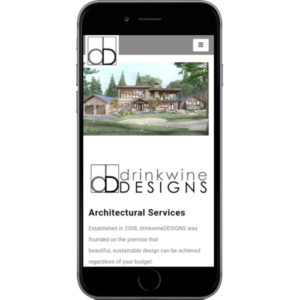Developing an e-commerce website optimized for high conversions involves strategically crafting both the design and functionality to maximize sales, enhance user experience, and build customer trust. High-conversion websites do more than just showcase products—they guide users through a seamless purchasing journey, from the moment they land on the site to the final checkout.
Here’s an in-depth overview of how to develop an e-commerce website that drives conversions:
1. User-Centric Design
A user-centered approach ensures that your website caters to the needs, preferences, and behaviors of your target audience. Key principles include:
- Simple, intuitive navigation: Users should be able to find products with minimal clicks.
- Responsive design: The site should adapt seamlessly to all devices—mobile, tablet, and desktop.
- Clean, professional layout: Avoid clutter by focusing on clear product presentation, minimal distractions, and a focus on the purchase funnel.
2. High-Quality Visuals & Product Display
Product images and videos are essential to converting visitors into buyers:
- High-resolution images: Display products from multiple angles with zoom functionality.
- Product videos: Offering video demonstrations or tutorials helps users understand products better.
- Image optimization: Ensure fast-loading visuals to prevent users from abandoning the site.
3. Compelling Product Descriptions
- Clear and concise copy: Highlight product features, benefits, and any unique selling propositions (USPs).
- SEO-friendly descriptions: Incorporate relevant keywords to improve search engine rankings.
- Detailed specifications: Provide all necessary details like size, weight, materials, and care instructions, which help reduce hesitation and drive purchases.
4. User Reviews and Social Proof
- Customer reviews: Encourage reviews and display them prominently on product pages.
- Ratings and testimonials: These build trust and credibility, reducing the risk for new buyers.
- Influencer endorsements: Leverage influencer marketing or social proof to showcase how real people use your products.
5. Streamlined Checkout Process
The checkout process should be as simple and quick as possible to minimize cart abandonment:
- Guest checkout: Allow users to purchase without creating an account.
- Multiple payment options: Offer a variety of payment methods (credit cards, PayPal, Apple Pay, etc.).
- Progress indicators: Show users how far along they are in the checkout process to reduce frustration.
- Autofill and address lookup: Simplify data entry, especially on mobile.
6. Site Speed and Performance Optimization
A fast-loading website is critical for retaining users and improving conversions:
- Optimize images: Compress images without losing quality.
- Use a Content Delivery Network (CDN): Ensure faster page loading globally.
- Minify CSS and JavaScript: Reduce unnecessary code to speed up load times.
7. Search Functionality
Effective search tools improve user experience and help them find products faster:
- Autocomplete: Offer suggestions as users type.
- Filters and sorting: Allow users to refine search results based on price, size, color, or other relevant attributes.
- Synonym handling: Ensure your search function can handle variations in terminology (e.g., “sneakers” vs. “trainers”).
8. Mobile Optimization
Since mobile commerce (m-commerce) is rapidly growing, optimizing your e-commerce site for mobile is essential:
- Mobile-friendly navigation: Use larger buttons and a simplified menu for easy mobile browsing.
- Fast load times: Mobile users are more likely to abandon slow-loading sites.
- One-click purchasing: Enable quick purchasing options for mobile users.
9. Security and Trust Indicators
Building customer trust is essential to encourage purchases:
- SSL certificates: Ensure that your site is secure and shows HTTPS in the browser.
- Trust badges: Display payment and security certifications (e.g., McAfee Secure, VeriSign) prominently.
- Easy-to-find contact information: Provide clear customer support options like live chat, phone, or email.
10. Personalization Features
Personalizing the shopping experience can significantly increase conversions:
- Product recommendations: Suggest related or complementary products based on user behavior.
- Dynamic content: Use data such as previous purchases or browsing history to tailor product displays.
- Special offers: Offer personalized discounts or incentives to returning customers or based on cart value.
Here are some essential features for e-commerce website development focused on achieving high conversions:
1. User-Friendly Navigation
A clear and intuitive navigation system helps users find products easily, leading to a smoother shopping experience. Features like:
- Categories and subcategories for product organization.
- Breadcrumbs to show users where they are on the site.
- Sticky navigation that remains visible as users scroll, providing easy access to essential links.
2. Fast Loading Times
Page speed is crucial for user experience and search engine rankings. Slow-loading sites can result in higher bounce rates and lost sales. To optimize:
- Compress images and files for faster load times.
- Use a content delivery network (CDN) to serve content quickly to users from different regions.
- Lazy loading for product images and videos, loading content only when necessary.
3. Mobile Optimization
With a growing number of shoppers using mobile devices, your e-commerce website must be fully responsive and optimized for smaller screens. Ensure:
- Mobile-first design: Create a mobile-friendly experience from the beginning.
- Simple navigation and touch-friendly buttons.
- Mobile payment options, like Apple Pay and Google Pay.
4. High-Quality Product Images & Videos
Visual content is key for e-commerce success. High-quality product images and videos help build trust and provide a clear view of what the customer is purchasing. Include:
- Multiple angles for each product.
- Zoom functionality for detailed product viewing.
- Product demo videos to showcase how the product works or looks in real life.
5. Clear Call-to-Action (CTA) Buttons
Strong CTAs guide users toward the desired action, whether it’s adding items to the cart, proceeding to checkout, or signing up for a newsletter. Best practices include:
- Bold, contrasting colors to make CTAs stand out.
- Action-oriented text like “Buy Now,” “Add to Cart,” or “Shop Today.”
- Place CTAs prominently on both product pages and home pages.
6. Simplified Checkout Process
A long or complex checkout process can lead to cart abandonment. Simplify it by:
- Guest checkout option: Don’t require users to create an account to purchase.
- Auto-fill forms: Allow users to auto-fill their shipping and billing information.
- Progress indicators: Show users how many steps are left in the checkout process.
7. Multiple Payment Options
Offer various payment gateways to accommodate a wide range of customers. Include:
- Popular credit cards (Visa, Mastercard, etc.).
- Digital wallets like PayPal, Apple Pay, Google Pay.
- Buy now, pay later options such as Klarna or Afterpay to appeal to a wider audience.
8. Customer Reviews & Ratings
Displaying customer feedback increases trust and provides social proof. Features include:
- Star ratings and written reviews for each product.
- Verified buyer badges to confirm the authenticity of reviews.
- Review filters to help users sort by rating, date, or usefulness.
9. Personalized Product Recommendations
Personalized recommendations based on browsing history, past purchases, or related items can increase sales by encouraging users to explore more products. Key strategies:
- “Customers also bought” or “Recommended for you” sections.
- Upselling and cross-selling based on user behavior.
- Dynamic product displays that update according to real-time user interactions.
10. Strong Security Features
Shoppers want to feel safe when entering their payment information. Provide robust security measures:
- SSL certificates for encrypted connections.
- Trust badges (e.g., Norton, McAfee) to ensure credibility.
- Two-factor authentication (2FA) for user accounts.
Here’s an overview of E-commerce Website Development for High Conversions with a focus on Payment Protection:
1. What is Payment Protection in E-commerce?
Payment protection refers to the measures taken to ensure that online transactions are secure for both customers and merchants. This includes encryption technologies, fraud detection systems, and secure payment gateways to prevent unauthorized access to sensitive information.
2. How does Payment Protection improve conversions?
Customers are more likely to complete a purchase if they feel confident that their payment information is secure. Implementing strong payment protection builds trust and reduces cart abandonment rates, thus boosting conversions.
3. What are some essential payment protection features for e-commerce sites?
Key features include:
- SSL certificates: Encrypt data during transmission between the browser and server.
- PCI-DSS compliance: Ensure that your site meets Payment Card Industry Data Security Standards.
- 3D Secure: Adds an additional layer of authentication for online card payments (e.g., Verified by Visa, MasterCard SecureCode).
- Tokenization: Replaces sensitive payment data with unique tokens that cannot be used outside of the transaction context.
- Fraud detection: Systems that identify and block suspicious activity, such as unusual purchasing patterns.
4. What payment gateways are best for security?
Popular and secure payment gateways include:
- PayPal: Offers fraud protection and buyer/seller protection programs.
- Stripe: Known for strong encryption, secure API, and advanced fraud detection tools.
- Square: Includes secure encryption and PCI compliance with easy-to-use interfaces.
- Authorize.net: Supports tokenization and advanced fraud detection measures.
- Apple Pay/Google Pay: Built-in protection features such as biometric verification.
5. What is PCI-DSS compliance, and why is it important?
PCI-DSS (Payment Card Industry Data Security Standard) is a set of security standards designed to protect card data during and after transactions. Compliance is critical for e-commerce businesses to protect customer data, avoid security breaches, and avoid hefty fines.
6. How can I reduce cart abandonment through secure payment options?
To minimize cart abandonment:
- Offer trusted payment methods: Customers may abandon their cart if their preferred payment method isn’t available or doesn’t seem secure.
- Use recognizable security logos: Displaying SSL certificates, PCI compliance badges, and trust seals increases confidence in the checkout process.
- Simplify checkout: Offer guest checkout and minimize the number of steps required to complete a purchase.
- Communicate security: Reassure customers by displaying messages like “Secure Checkout” or “Your Payment is Protected.”
7. What is tokenization in e-commerce?
Tokenization replaces sensitive payment information, like credit card numbers, with a unique identifier (token). This ensures that even if data is intercepted, it cannot be used for fraudulent transactions. It’s a key security measure for reducing risks of data breaches.
8. How do 3D Secure transactions work, and why are they important?
3D Secure (3DS) is an additional layer of authentication for card payments. During checkout, the cardholder is redirected to their bank’s website and prompted to enter a password or a one-time code sent via SMS to complete the transaction. This reduces fraud by ensuring the customer is the legitimate cardholder.
9. What steps can I take to protect my e-commerce site from fraud?
To protect your site:
- Implement fraud detection tools: Use software to monitor transactions for fraud indicators (e.g., mismatched shipping addresses, unusual purchasing patterns).
- Use secure hosting: Make sure your e-commerce platform or hosting provider offers strong security measures like firewalls and regular security updates.
- Set transaction limits: Put caps on the number or value of transactions that can be made in a short period.
- Require strong passwords: Encourage customers to create secure passwords for their accounts.
Only logged in customers who have purchased this product may leave a review.











Reviews
There are no reviews yet.